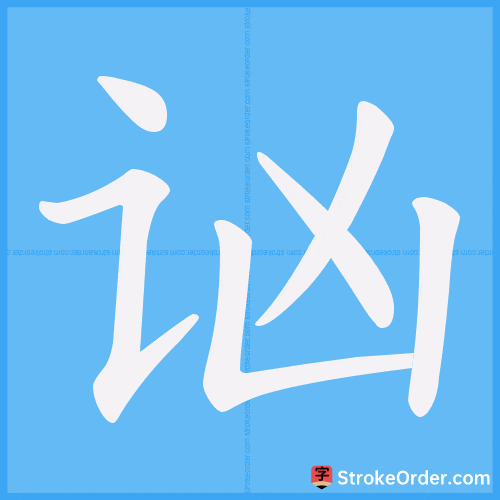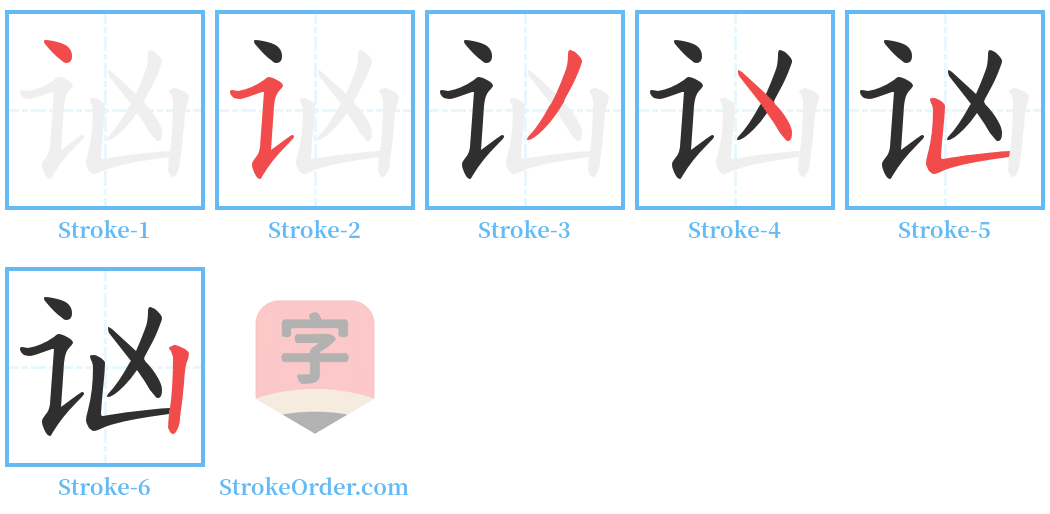讻 Stroke Order
Animated Stroke Order of 讻

Stroke Order Diagrams for 讻

Information of 讻
Pinyin
xiōng
Radical
讠
Strokes
6 strokes
Usage
★★
Definition
讻 (xōng)
1. Argue; to debate.
2. Calamity; disaster.
3. A noisy and chaotic situation.
4. To be full; to fill.
Definitions:
1. Argument: "不告于~。在泮献功。" (Not reporting to the argument. Contributing at the Pan.)
2. Calamity; disaster.
3. State of chaos and noise.
4. To be filled; to be abundant.
- Fundamental meaning: argue.
- Etymology: A phonetic compound of "言" (speech) and a character suggesting fierceness.
Synonyms:
1. Same fundamental meaning (to argue).
- Reference:
1. "说文": 讻,说也。
2. "尔雅": 讻,讼也。
3. "荀子·解蔽": 听漠漠而以为哅哅。
4. "曾巩《青云亭闲望》": 穷凶势犹竞,杀伐声更讻。
5. "诗·鲁颂·泮水": 不告于讻,在泮献功。
6. "盐铁论": 辩讼公门之下,讻讻不可胜听。
- Example: 讻讻 (noisy disturbance); 讻动 (a state of noisy chaos).
2. To intimidate; to instill fear.
- Reference:
1. 高绍陈《永清庚年纪略》: 伊等技穷,知讻余不恸,乃赴南关质库。
- Example: 讻惧 (a state of being frightened and unsettled).
As a noun:
1. Calamity; disaster.
- Reference:
1. "诗·小雅·节南山": 昊天不傭,降此鞠讻。
2. Also means fierce; violent.
- Reference:
1. "诗·小雅·节南山": 家父作诵,以究王讻.